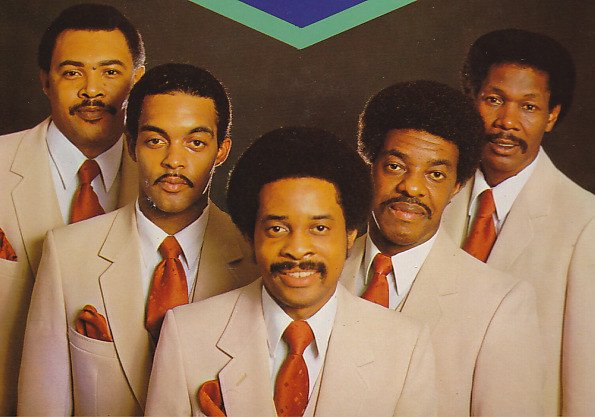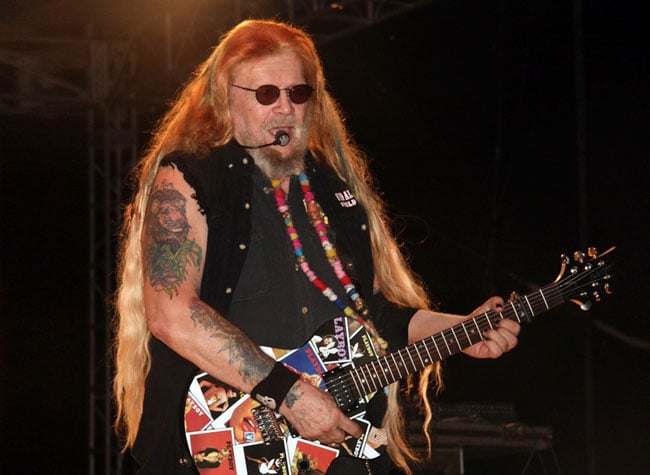Behind Bars: Discovering 10 Unique Groups Formed Inside U.S. Prisons
Updated on 1/29/2024
Behind Bars: 10 Influential Groups Formed in U.S. Prisons
The world of U.S. prisons, often hidden behind layers of security and silence, has been the birthplace of some of the most intriguing and influential groups in American history. While the concept of prison bands or groups is not commonly highlighted in mainstream media, their existence and impact are undeniably significant.
This article, “Behind Bars: 10 Influential Groups Formed in U.S. Prisons,” aims to shed light on these unique collectives that have emerged from within the prison walls. These groups range from music bands that found harmony in the clink to notorious gangs that extended their influence far beyond the penitentiaries.
The formation of these groups in such a challenging environment speaks volumes about human creativity, resilience, and sometimes, the darker sides of societal structures. These groups have not only influenced the culture within prisons but have also left a lasting mark on the outside world.
Some have used music as a form of expression and escape, creating songs and genres that resonate with many, while others have formed organized structures that impact the social and criminal landscape across the nation.
In the following sections, we will explore these groups in detail, understanding their origins, activities, and the legacies they have left behind.
From the musical tones of The Prisonaires, known for their hit “Just Walkin’ in the Rain,” to the infamous Charles Manson and the Manson Family, each group has a unique story that contributes to the complex tapestry of American prison history.
Join us as we delve into the lives and tales of these 10 groups, discovering how they managed to make a name for themselves from behind bars.
The Prisonaires
Year of Formation: 1953 Prison: Tennessee State Penitentiary Known For: The Prisonaires were an American vocal group formed in 1953, composed of inmates at the Tennessee Department Of Corrections.
They are particularly known for their song “Just Walkin’ in the Rain,” which they recorded while incarcerated. This song gained significant popularity and acclaim, highlighting the group’s unique circumstances and talent.
Their story and music drew attention to the potential for rehabilitation and the role of arts in prison environments. The success of The Prisonaires is a testament to how creativity and music can flourish under challenging conditions and change lives.
The Escorts
Year of Formation: 1970 Prison: Rahway State Prison Known For: The Escorts, formed in 1970, were a unique R&B group known for being comprised entirely of inmates from Rahway State Prison (now East Jersey State Prison) in New Jersey. Despite their incarceration, they achieved remarkable success in the music industry during the 1970s.
Their story is notable for how it demonstrates the power of music as a form of expression and rehabilitation within the prison system. The Escorts’ music, characterized by soulful melodies and harmonies, resonated with a wide audience, highlighting the talents and human stories of those within the prison system.
The group recorded their music while still incarcerated, and their albums received positive attention, both for their musical quality and for the remarkable circumstances under which they were produced. The Escorts are often remembered for their contributions to the R&B genre and for their unique place in music history as a symbol of creativity and resilience in the face of adversity.
Year of Formation: 1967 Prison: California State Prison Known For: Charles Manson and the Manson Family, formed in 1967, were infamous not primarily for their music, but for their connection to Charles Manson, a notorious criminal and cult leader. While Manson had aspirations in the music industry and some members of the so-called “Manson Family” were involved in music, their notoriety is overwhelmingly due to their criminal activities, including the horrific murders orchestrated by Manson in 1969.
The Manson Family’s association with music is a small footnote in a story that is predominantly about crime and the dark influence of a cult leader. Manson’s attempts to break into the music industry are often seen as part of the broader narrative of his manipulative and criminal behavior.
David Allan Coe and the Grinders
Year of Formation: 1968 Prison: Ohio State Penitentiary Known For: David Allan Coe and the Grinders, formed in 1968 while Coe was an inmate at Ohio State Penitentiary, are known for their unique blend of country and rock music. David Allen Coe, a central figure in the band, is a renowned country music artist who gained fame for his rebellious style and outlaw image in the country music scene.
The formation of the Grinders during Coe’s time in prison is a significant part of his musical journey and narrative. His experiences in prison influenced his music and lyrics, which often reflected themes of rebellion, personal freedom, and the struggles of the working class.
Coe’s time with the Grinders and his subsequent solo career highlight the transformative power of music and its ability to provide a creative outlet under challenging circumstances. His music resonates with fans who appreciate the raw honesty and storytelling in his songs.
Death Row Records
Year of Formation: 1991 Prison: California State Prison Known For: Death Row Records, established in 1991, is a legendary record label in the music industry, particularly known for its significant role in the development and popularization of gangsta rap.
It was co-founded by Suge Knight, a prominent figure in the music industry.
The label played a pivotal role in the rise of West Coast rap in the 1990s, fostering the careers of major artists like Dr. Dre, Snoop Dogg, and Tupac Shakur. Death Row Records is credited with producing some of the most groundbreaking and influential albums in the gangsta rap genre.
Despite its success in the music industry, Death Row Records was often embroiled in controversies, including legal battles and conflicts with other rap artists and labels. These issues contributed to its notorious reputation, paralleling the often contentious and rebellious spirit of the music it produced.
Norteños
Year of Formation: 1968 Prison: California State Prison Known For: The Norteños, formed in 1968, are known as a prominent Latino street gang primarily based in Northern California, with significant ties to the California State Prison system.
They are recognized for their distinctive red clothing and their use of the number 14, symbolizing the 14th letter of the alphabet, ‘N’, which stands for Norte or Norteño. The gang’s activities encompass various criminal enterprises, including drug trafficking, violent crime, and extortion.
Their formation and ongoing presence are deeply entwined with complex social, economic, and cultural factors that contribute to gang involvement and activity.
The Norteños have a long-standing and intense rivalry with the Sureños, a gang based in Southern California, which has led to frequent and often violent conflicts both within prison systems and in communities across California.
Mexican Mafia
Year of Formation: 1957 Prison: Deuel Vocational Institution Known For: The Mexican Mafia, formed in 1957 at Deuel Vocational Institution in California, is known as one of the largest and most powerful prison gangs in the United States.
The organization, also known as “La Eme” (Spanish for the letter ‘M’), was initially established to protect Hispanic inmates in prison but later evolved into a major criminal enterprise. The Mexican Mafia is involved in a wide array of criminal activities both within prison systems and outside, including drug trafficking, extortion, and orchestrating violence.
Its influence extends beyond the prison walls, impacting street gangs and other criminal activities across California and other states.
The group’s structure, operations, and the extent of its influence are a significant part of studies in criminology and law enforcement. The Mexican Mafia’s history and activities are often examined in the context of prison gang dynamics, the impact of incarceration on criminal networks, and the challenges of managing prison gangs within correctional facilities.
Aryan Brotherhood
Year of Formation: 1964 Prison: San Quentin State Prison Known For: The Aryan Brotherhood, formed in 1964 at San Quentin State Prison, is known as one of the largest and most notorious white supremacist prison gangs in the United States. Originally established as a protective group for white inmates, it quickly evolved into a criminal enterprise known for its violence and racial supremacist ideology.
The Aryan Brotherhood is involved in various criminal activities, including drug trafficking, murder, and racketeering, both within prison systems and in criminal networks outside prisons. The group is known for its strict codes, hierarchies, and the use of specific symbols and tattoos for identification.
The gang’s activities and influence extend far beyond individual prisons, impacting the broader criminal landscape and posing significant challenges to law enforcement and prison management. The Aryan Brotherhood’s existence and operations are a subject of study in the fields of criminology, sociology, and law enforcement, particularly focusing on issues related to prison gangs, organized crime, and hate groups.
Crips
Year of Formation: 1969 Prison: California Youth Authority facilities Known For: The Crips, established in 1969, are known as one of the largest and most prominent street gangs in the United States. Although their presence extended into various California Youth Authority facilities, the Crips primarily originated and developed in the streets of Los Angeles.
The Crips are recognized for their distinctive blue attire and are involved in a wide range of criminal activities, including drug trafficking, violent crime, and gang warfare. The formation of the Crips marked a significant moment in the history of street gangs in the U.S., particularly in the context of urban youth culture and the social dynamics of Los Angeles neighborhoods in the late 20th century.
One of the most notable aspects of the Crips is their long-standing and intense rivalry with the Bloods, another major street gang, which has led to widespread violence and conflicts, both in communities and in correctional facilities.
United Blood Nation
Year of Formation: 1969 Prison: California Youth Authority facilities Known For: The United Blood Nation, often simply known as the Bloods, was formed in 1993 at Rikers Island, a jail complex in New York City. This formation marked the establishment of the Bloods as a significant African American street gang on the East Coast, particularly in New York.
Originally created for mutual protection against rival gangs within the prison system, the United Blood Nation quickly expanded its influence to the streets. The gang is known for its distinctive red clothing and has been involved in various criminal activities, including drug trafficking, violent crime, and gang-related conflicts.
The emergence of the United Blood Nation on the East Coast is often seen as a response to the presence of other established gangs, such as the Crips. Their rivalry with Crip factions is well-documented and has contributed to gang violence both within prison systems and in urban communities.




